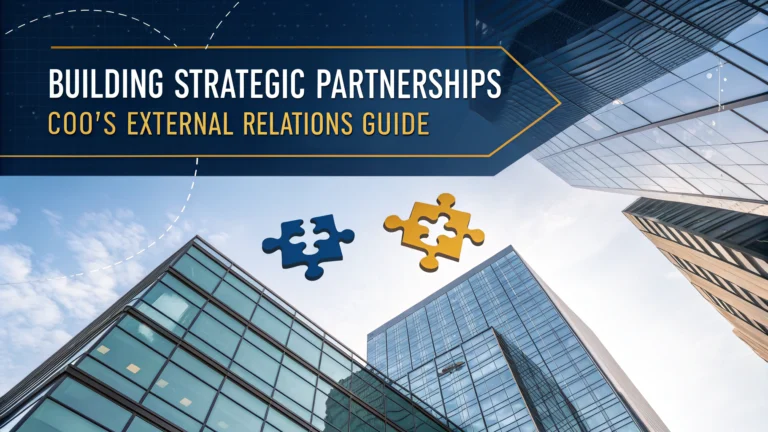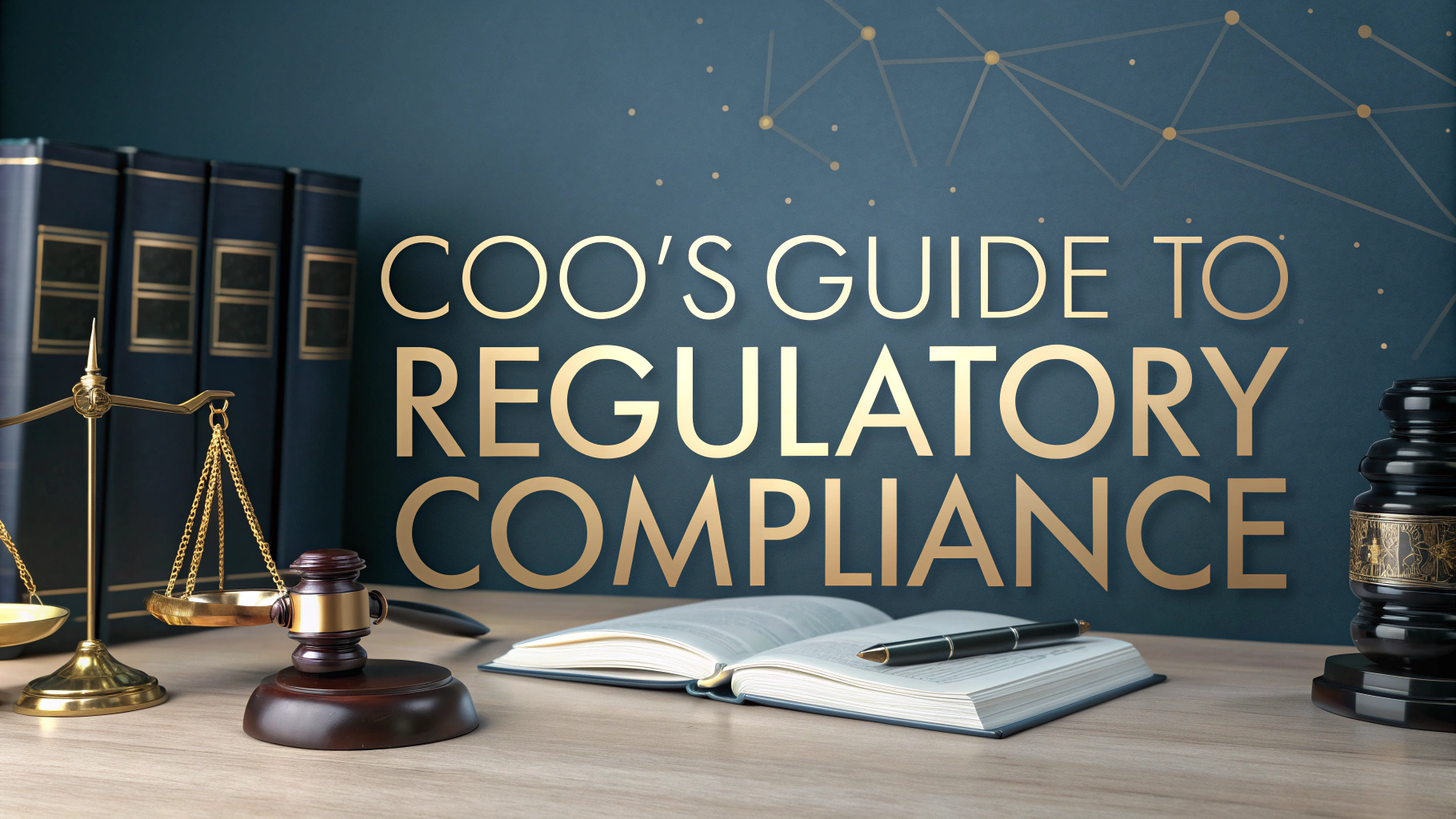Strategic partnerships can significantly amplify a COO’s ability to drive organizational growth and operational excellence.
Building and maintaining meaningful external relationships requires a systematic approach that balances resource investment with tangible business outcomes.
This guide outlines practical steps for COOs to develop and nurture strategic partnerships that create lasting value for their organizations.
Identifying Strategic Partnership Opportunities
- Map current business gaps and capabilities
- Research potential partners who complement your strengths
- Evaluate market positioning and competitive landscape
- Assess cultural alignment and shared values
Partnership Evaluation Framework
| Criteria | Key Questions |
|---|---|
| Strategic Fit | Does this align with our core objectives? |
| Resource Requirements | What investments are needed? |
| Risk Assessment | What are potential downsides? |
| ROI Potential | What measurable benefits can we expect? |
Building Effective Communication Channels
Establish clear points of contact at multiple organizational levels to ensure smooth information flow.
- Schedule regular check-ins and progress reviews
- Create shared documentation systems
- Implement feedback mechanisms
- Use project management tools for collaboration
Legal and Compliance Considerations
Work closely with legal counsel to structure partnerships properly.
- Draft comprehensive partnership agreements
- Define intellectual property rights
- Establish confidentiality protocols
- Create dispute resolution procedures
Measuring Partnership Success
Track key performance indicators (KPIs) to evaluate partnership effectiveness:
- Revenue growth from joint initiatives
- Cost savings through shared resources
- Market share expansion
- Customer satisfaction metrics
- Innovation outcomes
Building Long-term Value
Focus on creating sustainable partnerships through:
- Regular strategy alignment sessions
- Joint business planning
- Shared investment in growth initiatives
- Cross-functional team collaboration
Tips for Partnership Management
- Be transparent about expectations and challenges
- Stay flexible to accommodate changing needs
- Maintain regular communication even when things are going well
- Document all agreements and decisions
- Celebrate shared successes to build momentum
Next Steps for Partnership Excellence
Schedule a partnership audit to identify areas for improvement and growth opportunities.
Document lessons learned from past partnerships to refine your approach.
Create a partnership roadmap with clear milestones and success metrics.
For more information on strategic partnerships, contact your local Chamber of Commerce or industry associations specializing in business development.
Partnership Risk Mitigation
- Develop contingency plans for potential disruptions
- Monitor external market conditions affecting partnerships
- Implement early warning systems for potential issues
- Maintain backup supplier relationships
- Review insurance and liability coverage regularly
Technology Integration
Leverage digital tools to strengthen partnership operations:
- Cloud-based collaboration platforms
- Data sharing protocols
- Integrated reporting systems
- Automated workflow management
- Security measures for shared resources
Cultural Alignment Strategies
Internal Preparation
- Train teams on cross-cultural communication
- Establish partnership champions within departments
- Create integration committees
External Integration
- Organize joint team-building activities
- Share best practices across organizations
- Develop common operating procedures
Scaling Partnership Success
Methods to expand successful partnerships:
- Identify new market opportunities
- Expand geographic reach
- Develop additional product/service lines
- Create joint innovation initiatives
Maximizing Strategic Alliance Value
Essential actions for sustained partnership excellence:
- Conduct quarterly partnership health checks
- Maintain executive sponsorship engagement
- Update partnership strategies annually
- Build resilient relationship frameworks
- Foster continuous improvement culture
Driving Partnership Excellence Forward
Strategic partnerships remain a critical driver of business growth and innovation. Success depends on careful planning, consistent execution, and ongoing commitment to mutual value creation.
- Review and update partnership strategies regularly
- Invest in relationship-building at all levels
- Stay focused on measurable outcomes
- Maintain flexibility in approach while staying true to core objectives
Remember that successful partnerships require ongoing attention, resources, and dedication to evolve with changing market conditions and organizational needs.
FAQs
- What is the primary role of a COO in building strategic partnerships?
A COO oversees the operational aspects of partnerships, ensures alignment with company objectives, evaluates potential partners, and maintains relationships while monitoring partnership performance and execution. - How should a COO evaluate potential strategic partners?
A COO should assess financial stability, operational compatibility, cultural fit, market reputation, complementary capabilities, and strategic alignment with company goals. - What legal considerations should a COO address in strategic partnerships?
Key legal considerations include intellectual property rights, liability allocation, confidentiality agreements, compliance requirements, exit clauses, and dispute resolution mechanisms. - How can COOs measure the success of strategic partnerships?
Success can be measured through KPIs including revenue growth, cost savings, market expansion, innovation metrics, customer satisfaction scores, and operational efficiency improvements. - What role does risk management play in strategic partnerships?
COOs must identify, assess, and mitigate risks related to partnerships, including operational, financial, reputational, and compliance risks while establishing contingency plans. - How should COOs handle partnership conflicts and challenges?
COOs should establish clear communication channels, develop conflict resolution procedures, maintain regular partnership reviews, and address issues promptly through established governance frameworks. - What are the key components of a partnership governance structure?
Essential components include steering committees, clear reporting lines, decision-making processes, performance monitoring systems, and regular review mechanisms. - How can COOs ensure effective communication with strategic partners?
COOs should establish regular check-ins, create standardized reporting processes, use collaborative tools, maintain open dialogue channels, and ensure clear points of contact between organizations. - What role does technology play in managing strategic partnerships?
Technology facilitates partnership management through collaboration platforms, data sharing systems, performance tracking tools, communication systems, and integration capabilities. - How should COOs approach international strategic partnerships?
COOs must consider cultural differences, regulatory requirements, local market conditions, language barriers, and establish appropriate governance structures for cross-border collaboration.








